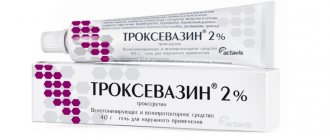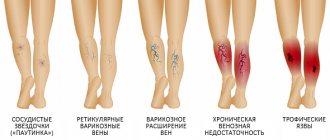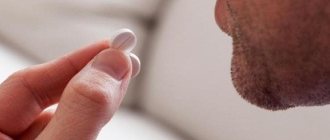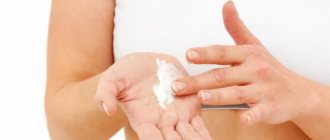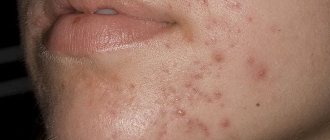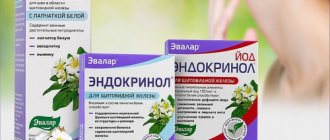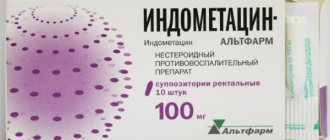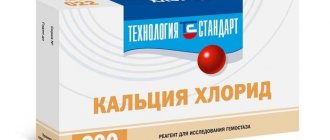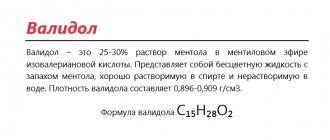Photo: womensmed.ru Photo: yandex.ru
Photo: google.com Photo: google.com
Troxevasin is a venotonic drug. It has venoprotective, decongestant, anti-inflammatory, anticoagulant and antioxidant effects. Active ingredient: Troxerutin.
When applied externally, it is detected in the dermis after 30 minutes. When taken orally, the maximum concentration occurs within 2 hours. Dispensed without a doctor's prescription.
What is Troxevasin
A medicine based on the angioprotective active substance troxerutin. Regulates the tone of capillary vessels and veins. It is used to eliminate pain, swelling and trophic disorders caused by their dysfunction.
Troxevasin is produced:
- in the form of an ointment for topical use: a viscous yellowish gel-like mass containing 2% troxerutin, packaged in 40 g tubes;
- in the form of capsules for oral administration: in a dosage of 300 mg of the active substance, gelatin, in blisters.
The product has a pronounced venoprotective effect. It helps reduce the permeability of vascular walls, improves blood outflow, prevents its stagnation in the lower extremities, prevents thrombus formation and the development of inflammatory processes. Troxevasin alleviates the underlying symptoms of varicose veins and slows down its progress.
Compound
The capsule shell includes gelatin and the following dyes (the E-code of the food additive is indicated in parentheses):
- Titanium dioxide (E171);
- Orange yellow (E110);
- Quinoline yellow (E104).
The main component of Troxevasin is troxerutin. Each capsule contains 300 mg of this substance. Additionally, the powder contains milk sugar monohydrate (lactose) and magnesium salt of stearic acid.
What is Troxevasin used for?
Medicinal ointment and capsules are prescribed:
- for chronic venous insufficiency;
- lack of nutrition of soft tissues caused by varicose veins;
- with postphlebitic syndrome;
- trophic ulcers;
- for symptoms of hemorrhoids;
- with retinopathy against the background of hypertension and diabetes.
The drug is used to prevent complications after surgical treatment of varicose veins, to prevent further vascular damage in the initial stages of pathology. Troxevasin is also indicated to improve well-being after mechanical injuries: bruises or sprains.
The active substance from the capsules is absorbed in the intestines. Its maximum concentration in the blood is observed 1.5–2 hours after administration. Metabolized by the liver and completely leaves the body within 0.5–1 day. Troxerutin from the ointment penetrates all layers of the epidermis, dermis and subcutaneous tissue within 3–5 hours.
Reviews about the drug
Patients and specialists leave approximately the same reviews about the two dosage forms of the drug. Most patients note the high effectiveness of the drug for bruises, hemorrhoids and varicose veins.
Doctors also note positive results in the treatment of patients with the above pathologies.
Negative reviews are most often found when patients self-medicate and want to get rid of varicose veins only with the help of Troxevasin. Relief of the symptoms of this disease is possible only with complex, competent treatment in combination with the use of other drugs, elastic compression, diet, proper daily routine and adherence to work and rest.
When is Troxevasin contraindicated?
It is prohibited to take the drug orally:
- with exacerbations of ulcerative lesions of the gastrointestinal mucosa;
- some forms of gastritis;
- severe renal failure;
- increased sensitivity to the active or excipients of the drug.
The use of ointment should be avoided:
- if an allergic reaction to the drug develops: increased swelling, rash, severe burning or itching;
- with severe irritation, furunculosis, open skin lesions at the site of application of the product.
How the drug works
Troxevasin provides angioprotective and venotonic effects. The effect of the drug applies only to veins and capillaries. The active component reduces the pores between endothelial cells, thereby reducing the permeability of the walls of blood vessels.
Troxerutin, which exhibits antioxidant properties, protects adrenaline, ascorbic and hyaluronic acids from oxidation. As a result, the walls of blood vessels are strengthened, their fragility is prevented, and venous outflow is improved.
Thanks to Troxevasin, the symptoms of chronic venous insufficiency are reduced: pain disappears, swelling goes away, trophic ulcers heal. Signs of hemorrhoids disappear: bleeding stops, the size of hemorrhoids decreases, and itching stops bothering you.
The drug slows down the development of retinopathy caused by diabetes mellitus and arterial hypertension, and prevents thrombosis of retinal vessels.
Retinopathy is a disease of the retina of the eye associated with impaired blood circulation in it. The disease progresses rapidly and threatens vision loss, which is facilitated by the death of light-sensitive cells as a result of insufficient blood supply to tissues.
How to use Troxevasin capsules
The medicine should be swallowed with water, without chewing or crushing. Meal times don't matter. At the beginning of therapy, take 1 capsule. three times a day. Diabetic retinopathy and other severe conditions require up to 1800 mg (6 capsules) per day.
The course is continued for up to 15 days. After assessing the effectiveness of the dose, the dose is adjusted. It may increase or decrease. If the symptoms of the pathology subside, at the discretion of the doctor, therapy can be completed without a maintenance period. Otherwise, Troxevasin is taken for another 3-4 weeks.
Overdose
If the drug is taken uncontrolled, an overdose is possible. It manifests itself with the following symptoms:
- Increased nervous excitability;
- Headache;
- Nausea and vomiting;
- "Hot flashes" to the face.
In case of overdose, the patient's stomach is washed and black or white activated carbon is given at the rate of 1 tablet per 10 kg of human body weight. It can be replaced with another agent: Smecta, Polyphepan, Polysorb or another adsorbent drug. In case of severe poisoning, symptomatic treatment is indicated.
How to use Troxevasin ointment
The drug is used externally: on clean skin over the lesion. A small amount of ointment is distributed over the body area in a thin layer, lightly rubbing it in until completely absorbed. After application, you can leave the skin open or apply fixing bandages, bandages, and put on compression stockings and bandages if necessary.
The procedure for applying the medicine is repeated twice a day: in the morning and in the evening. If this is not enough, do it more often. There is no need to specifically rinse off any remaining drug before applying again. The duration of treatment with ointment is up to 7 days. If there is no result or the physical condition worsens, the medicine is discontinued and another method of therapy is chosen.
Side effects
In rare cases, Troxevasin causes the following side effects:
- Headache;
- Nausea;
- Heartburn;
- Diarrhea;
- "Hot flashes" to the face;
- Allergy (usually in the form of urticaria);
- Damage to the gastrointestinal tract of an erosive-ulcerative nature.
Side effects can only be eliminated by discontinuing the drug.
Indications for use
Direct indications for the use of Troxevasin gel are both ailments of the circulatory system and concomitant phenomena that arise during their development. Let's look at them:
- chronic venous insufficiency, which occurs with swelling and pain;
- superficial thrombophlebitis and spider veins or spider veins;
- a feeling of heaviness in the legs, which also occurs due to varicose veins;
- trophic disorders associated with varicose veins;
- postphlebitic syndrome and periphlebitis;
- presence of hemorrhoids;
- swelling and painful conditions that occur after bruises and injuries;
- after the vein sclerotherapy procedure;
- after surgical removal of veins;
- for the treatment of retinopathy in patients with diabetes, atherosclerosis, hypertension (as an adjuvant);
- for hemorrhoids and venous insufficiency, which develops in women bearing a child (Troxevasin ointment can be used by pregnant women from the second trimester and only as prescribed by a doctor who is monitoring the pregnant woman).
Allergy test
The skin under the eyes is delicate and delicate. To avoid causing more damage, a test is performed before applying to the periorbital area.
Apply a small amount of the substance to the inside of the elbow. If there is no reaction after 2 hours, then the skin under the eyes will not be affected.
If redness, pimples, itching or burning appear, the use of the drug to eliminate bruises and swelling of the periorbital area is prohibited. The skin around the eyes is more delicate than on the inside of the elbow. The reaction may be unpredictable.
Analogs for the active substance
Troxevasin capsules have cheaper analogues. These include:
- Troxerutin, 300 mg. The cost of a package with 30 capsules is 200, and with 50 capsules – 270 rubles. This is a Russian-made drug (produced by a pharmaceutical company);
- Troxerutin-MIC, 200 mg. The approximate price for a package (50 pieces) is 165 rubles. The product is produced by Belarusian;
- Troxerutin Vramed, 300 mg. A package of 50 capsules costs about 300 rubles. Manufacturer – Bulgarian;
- Troxerutin Zentiva, 300 mg. Sold in a cardboard package containing 50 capsules. Approximate cost: 360 rubles. The product is manufactured in the Czech Republic by the pharmaceutical industry.
The composition of the drug Troxerutin is the same and does not depend on the “surcharge” to the name. The latter indicates only the country of production. The drug differs from Troxevasin only in the reduced bioavailability of the active component.
Please note that the dosage of Troxerutin-MIC is 200 mg of the active substance instead of the usual 300 mg. This means that you will have to take not 2-3, but 3 to 5 capsules per day, and the drug will run out faster.
Special instructions
When using the gel, it is necessary to observe some precautions: do not allow the drug to come into contact with mucous membranes and wound surfaces . If increased vascular permeability is observed, then you need to take ascorbic acid at the same time.
The drug is not toxic. Its shelf life is 5 years; it cannot be used after the expiration of this time period. Troxevasin should be stored in a dry place, protected from exposure to sunlight, the temperature range is between 3 and 25 degrees above zero.
. The drug should be kept out of the reach of children. Before using the product, you can read the reviews of those who have used it.
Contraindications
Absolute contraindications for the dosage form of Troxevasin in the form of capsules:
- Pregnancy in the first trimester;
- Exacerbation of gastritis;
- Acute phase of gastrointestinal ulcers;
- Hypersensitivity to rutosides;
- Children under 3 years of age;
- Individual intolerance to at least one component of the drug, including the substances from which the capsule shell is made.
Troxevasin capsules are prescribed with caution:
- Children under 15 years old;
- Women during the second and third trimesters of pregnancy;
- During breastfeeding;
- Patients with renal failure.
There is no data on the negative effect of the drug on the fetus. Therefore, it can be used during pregnancy if the expected benefits outweigh the potential risks. However, in the first 12 weeks of pregnancy, when the baby’s vital organs are developing, safety net is required.
